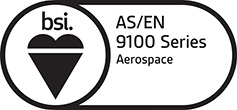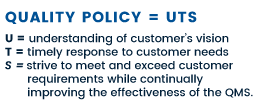What is Ultrasonic Test (UT) Inspection?
Ultrasonic testing (UT) is a non-destructive testing method that employs high-frequency sound waves to identify cracks and defects in various materials and components. This technique is widely used in industries such as aerospace, automotive, petrochemical and industrial manufacturing to ensure the material uniformity of products. With UT, technicians can accurately assess the quality and integrity of a wide range of materials, including metals, plastics, and composites.
UT works by sending ultrasonic waves through the material being tested. These waves bounce back when they encounter a change in density, such as a crack or void. The reflected waves are then analyzed to determine the size, location, and severity of any defects.
Ultrasonic Test Inspection methods
Ultrasonic Shear Wave / Phased array
The ultrasonic shear wave method is a technique which encompasses angle beam ultrasonic testing to identify subsurface anomalies not found directly underneath the transducer itself.
Phased Array Ultrasonic Testing (PAUT), also known as phased array UT, is an advanced non-destructive inspection technique that uses a set of ultrasonic testing (UT) probes made up of numerous small elements. Each of these is pulsed individually with computer-calculated timing to create the phased aspect of the process, while the array refers to the multiple elements that make up a PAUT system. Phased Array Devices, which produces detailed cross-sectional pictures of internal structures. This method also is used in immersion UT testing.
The process involves sending an ultrasonic wave through the material being tested, at an angle other than normal incidence to the test specimen, these angles are 45°, 70°, and 60°, which then reflects back to the receiver. By analyzing the time (sound path) it takes for the wave to travel through the material and the strength of the reflected wave, technicians can determine the material’s properties, such as its density, elasticity, thickness and velocity. In most cases it is only necessary to have one-side access and our technicians have the ability to evaluate with immediate results. This technique is commonly used in industries such as manufacturing, construction, and aerospace to ensure the quality and safety of materials. It is particularly useful for detecting corrosion, erosion, and other forms of material degradation that can compromise the integrity of structures and equipment.
Ultrasonic Thickness
Ultrasonic thickness measurement is a non-destructive testing technique used to determine the thickness of a material. This method involves the use of high-frequency sound waves that are transmitted through the material being tested. The sound waves travel through the material and are reflected back to the transducer, which measures the time it takes for the waves to travel through the material and return.
The ability to gauge thickness measurement without requiring access to both sides of the test piece, offers this technology a multitude of possible applications. Paint thickness gauges, ultrasonic coating thickness gauges, digital thickness gauges and many more options are available to test plastics, glass, ceramics, metal and other materials. Along with coating thickness, it is widely being used for thicknesses of glass, wood, and plastics and also serves as major testing equipment in the corrosion industry.
Ultrasonic Immersion
Conventional ultrasonic testing typically involves the use of a coupling agent, such as oil, gel, or water, to enhance the transmission of ultrasonic waves and ensure that the transducer is in direct contact with the tested item. The transducer is then manually moved over the surface of the item to capture readings. Phased array devices produce detailed cross-sectional pictures of internal structures.
In contrast, immersion ultrasonic testing involves submerging both the tested part and the transducer in water. This method allows for more efficient sound travel from the transducer and ensures a consistent distance between the transducer and the component being tested.
By utilizing immersion ultrasonic testing, technicians can obtain more accurate and reliable results, particularly when testing complex or irregularly shaped components producing a C-scan Image (some in 3D). This method is commonly used in industries such as aerospace, automotive, and manufacturing, where precision and quality control are of utmost importance.
Advantages of Ultrasonic Testing
There are several advantages of using the UT process.
- Superior depth of penetration
- Inspection provides both thickness measurement and flaw detection
- Great option to inspect surface and subsurface levels
- More safe and environmentally-friendly than radiography
- Only single side access required to perform test.
- More portable than most other NDT methods.
The NTS Unitek benefit
Our team of highly qualified NDT inspectors can determine subsurface discontinuities by carefully examining their nature, location and extent. Our team of non-destructive testing (NDT) technical specialist are highly qualified in ultrasonic test inspection. They hold Level II and III certifications from the American Society for Nondestructive Testing (ASNT), as well as other industry qualifications. Trust us in providing professional and reliable NDT inspection support services that will help you validate your product conformity.
Please contact us to obtain further details regarding our Ultrasonic Test inspection support services. The NTS Unitek team of experts is readily available to assist you with any inquiries you may have.




